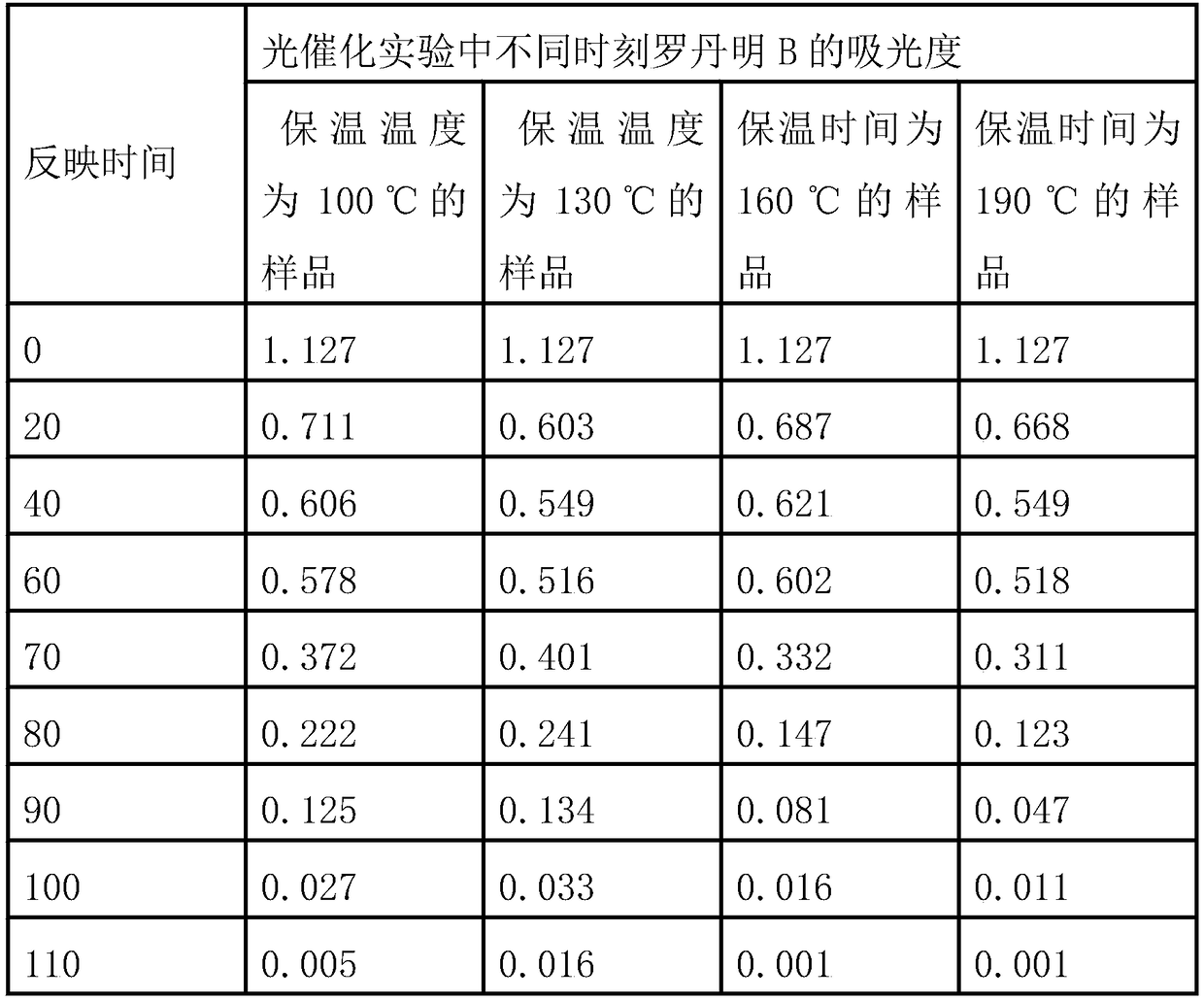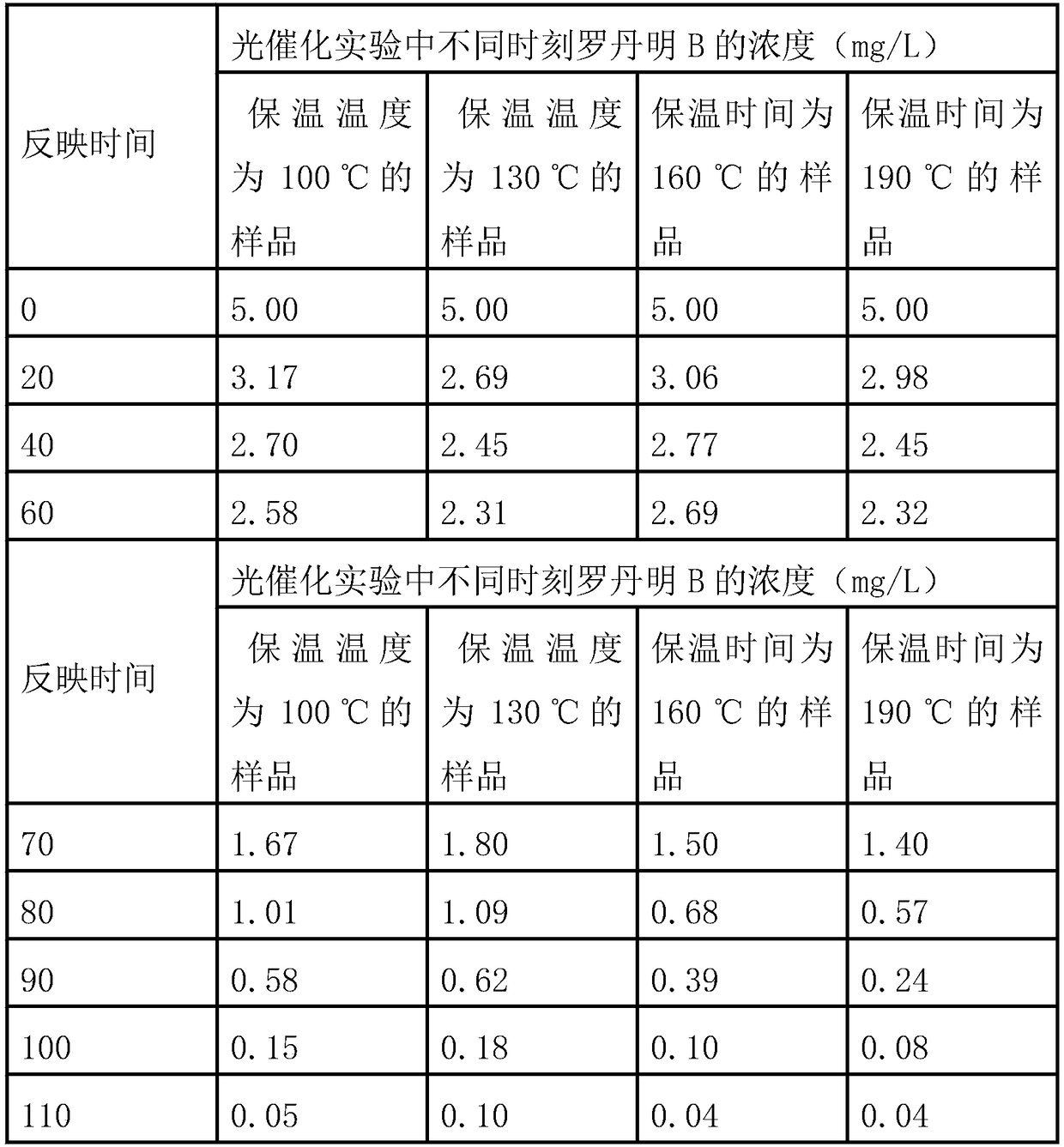Preparation method of floating bead loaded bismuth oxyiodide catalyst
A technology of bismuth oxyiodide and photocatalyst, which is applied in the field of preparation of bismuth oxyiodide photocatalyst supported by floating beads, can solve the problems that bismuth oxyiodide is not easy to recycle, and achieve the effects of low price, high catalytic efficiency and stable performance
- Summary
- Abstract
- Description
- Claims
- Application Information
AI Technical Summary
Problems solved by technology
Method used
Image
Examples
Embodiment 1
[0031] A kind of preparation method of floating bead loaded bismuth oxyiodide photocatalyst, comprises the following steps:
[0032] Step 1: Pour the fly ash into a beaker filled with distilled water, stir and let it stand, and sort out the floating beads floating on the water surface;
[0033] Step 2: Soak the sorted floating bead particles in 10% dilute nitric acid for 10 hours to remove impurities attached to the floating beads, rinse with distilled water for several times until the rinse solution is neutral, and then use filter paper Filter, and then dry with an electric blast drying oven at a drying temperature of 110°C to obtain floating beads;
[0034] Step 3: 2:1 bismuth nitrate pentahydrate, potassium iodide, and polyvinylpyrrolidone are added to obtain the base liquid in the ethylene glycol reaction vessel with a molar ratio of 2:1, and the reaction vessel is placed on a multifunctional stirrer for the The base liquid is stirred, and after stirring, it is placed in ...
Embodiment 2
[0040] A kind of preparation method of floating bead loaded bismuth oxyiodide photocatalyst, comprises the following steps:
[0041] Step 1: Pour the fly ash into a beaker filled with distilled water, stir and let it stand, and sort out the floating beads floating on the water surface;
[0042] Step 2: Soak the sorted floating bead particles in 14% dilute nitric acid for 14 hours to remove impurities attached to the floating beads, rinse with distilled water for several times until the rinse solution is neutral, and then use filter paper Filter, and then dry with an electric blast drying oven at a drying temperature of 150°C to obtain floating beads;
[0043] Step 3: 2:1 bismuth nitrate pentahydrate, potassium iodide, and polyvinylpyrrolidone are added to obtain the base liquid in the ethylene glycol reaction vessel with a molar ratio of 2:1, and the reaction vessel is placed on a multifunctional stirrer for the The base liquid is stirred, and after stirring, it is placed in ...
Embodiment 3
[0049] A kind of preparation method of floating bead loaded bismuth oxyiodide photocatalyst, comprises the following steps:
[0050] Step 1: Pour the fly ash into a beaker filled with distilled water, stir and let it stand, and sort out the floating beads floating on the water surface;
[0051] Step 2: Soak the sorted floating bead particles in 12% dilute nitric acid for 12 hours to remove impurities attached to the floating beads, rinse with distilled water for several times until the rinse solution is neutral, and then use filter paper Filter, and then dry with an electric blast drying oven at a drying temperature of 115°C to obtain floating beads;
[0052] Step 3: Be that 2:1 bismuth nitrate pentahydrate, potassium iodide, and polyvinylpyrrolidone are added to obtain the base liquid in the ethylene glycol reaction vessel with a molar ratio of 2:1, and the reaction vessel is placed on a multifunctional stirrer for the The base liquid is stirred, and after stirring, it is plac...
PUM
 Login to View More
Login to View More Abstract
Description
Claims
Application Information
 Login to View More
Login to View More - R&D
- Intellectual Property
- Life Sciences
- Materials
- Tech Scout
- Unparalleled Data Quality
- Higher Quality Content
- 60% Fewer Hallucinations
Browse by: Latest US Patents, China's latest patents, Technical Efficacy Thesaurus, Application Domain, Technology Topic, Popular Technical Reports.
© 2025 PatSnap. All rights reserved.Legal|Privacy policy|Modern Slavery Act Transparency Statement|Sitemap|About US| Contact US: help@patsnap.com


